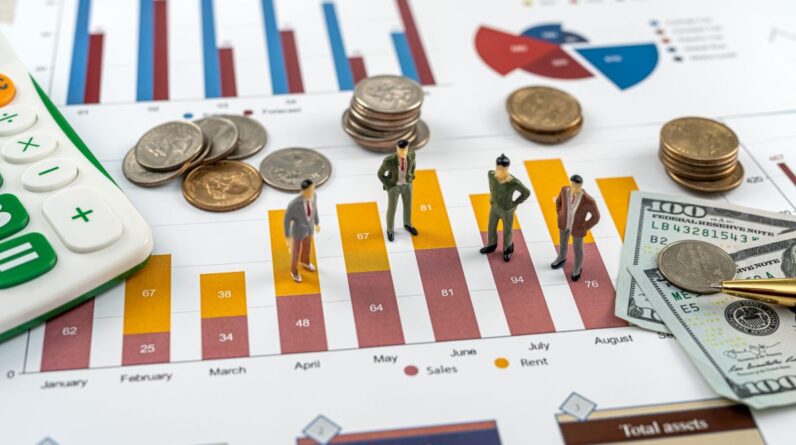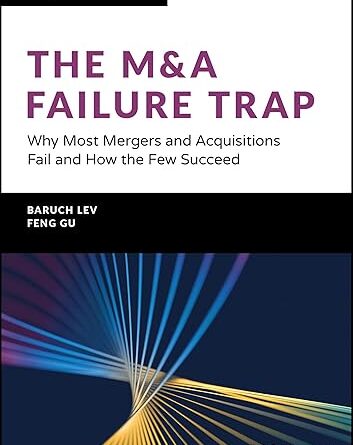
In Part I, I discussed the rise of global AUM in private market funds and how this trend may have been driven by a perception of superior returns compared to traditional investments. I believe that a root cause for this belief is the generalized use of IRR to infer rates of return, which is problematic.
In this post, I will discuss in more detail how IRR works and why investors must be careful not to view the metric as an equivalent measure to infer investment rates of return.
What is an IRR?
IRR is a discount rate. It is the discount rate that would make the net present value (NPV) of an investment zero.
Note:
In my first post in this series, I introduced a hypothetical example involving an asset and a set of intermediary cash flows to illustrate the challenge this causes when equating an IRR with a rate of return on investment. The situation involved a property acquired in 1976 for $100,000 and then sold for $1 million in 2016, or 40 years later. The model was complicated by introducing intermediary cash flows in the form of renovation work for an amount of $500,000 in 1981, while obtaining lump-sum payments from the tenant in 2000 for five years of tenancy ($200,000) and then again in 2010 ($400,000). The resulting equation to obtain the rate of return was proposed as:

Where r is the reinvestment rate, f is the financing rate, and ror is the rate of return.
Equivalently, IRR is the number x which would solve the equation in the example above if we assume that x = ror = f = r. By making that assumption that equation has only one unknown:

Which can be rewritten as:

Or,

You may recognize the NPV formula: the present value of all the cash flows discounted at a rate equal to irr is equal to zero. One equation, one unknown, but unsolvable by hand. You need to write a code to find out the solution to this equation.
Why would one make such an assumption and present the result as a rate of return? First, as just explained, a rate of return does not exist for an asset that has more than two cash flows. Hence, for any private capital fund, there is simply no rate of return that can be computed, unless there are no intermediary cash flows. In a way, there is a void. As investors are used to thinking in terms of rates of return, maybe out of habit from the stock market, they really want a rate of return.
Second, the IRR coincides with a rate of return under certain conditions. Specifically, IRR is correct if the rate at which all distributions are re-invested equals the IRR, and all investments after the initial one were financed at a rate equal to IRR.
As a result, IRR is the best candidate to fill the void because there are cases in which it will be right, or close to right. The problem is that for many private capital firms track records, it is not even close to right.
Since the issue comes from this re-investment assumption, the accuracy of IRR is related to its level. If the IRR is somewhere between 4% and 15%, say, then, it is alright because you could re-invest (and borrow) at that rate. That is, an implicit assumption of a reinvestment/financing somewhere between 4% and 15% for an investment in North America or Western Europe is plausible and therefore the IRR is plausible.
Interestingly, in practice, whenever an IRR is negative, it is not reported. Instead, fund managers write “not meaningful.” A negative IRR assumes that every distribution is reinvested at a negative rate of return. In other words, money is burnt. A negative IRR is therefore not meaningful, indeed. For the same reason, however, any IRR above, say, 15%, is not meaningful. Yet, people seem keen to present high IRRs as perfectly meaningful. I demonstrated this tendency in my first article in this series. In that post, I shared some potentially influential news articles and statistics in nine exhibits from 2002 to 2024.
One quick fix would be to require that any IRR outside a 0% to 15% window is reported as non-meaningful — unless there are no intermediary cash flows.
Practitioners often argue that if someone knows the multiple of money, they can tell whether the IRR is correct or not. They mean that if IRR is 30% and money multiple is 1.1, then IRR is wrong, but if IRR is 30% and money multiple is 3, then IRR is correct. One issue I illustrated in my last post is that in all the exhibits except for one, a money multiple was not shown or discussed. Even if we search through the whole of the 10K fillings of any of the private capital firms, the only money multiple that is provided is one gross of fees — and not net of fees. The Yale Endowment, which is so influential, as I exposed in my last post, has never shown its money multiple.[1]
Note that money multiple has different acronyms and is not always computed the same way. The two most-used acronyms are MOIC and TVPI. MOIC (multiple of invested capital) is usually how much has been returned to investors before fees divided by how much had been called to invest (not including the fees). TVPI (total value to paid-in capital) is usually the sum of what has been distributed to investors net of fees plus the value of un-exited investments (net asset value), divided by the sum of all the money called from investors (thus, including fees).
Note also that it is possible for an investment to have both a high multiple and a high IRR but a relatively poor underlying rate of return. An example is provided in Table 1. The investment has a large early distribution, which is what drives the high IRR, but is held for a long time, which drives the multiple. Column 3 shows the value of the same amount invested ($100), growing at 14.5% per annum and paying out small dividends each year (2013-2020). To make the cash flows equivalent, let’s assume I borrowed $80 at the end of year 2012, which I paid as a dividend. All the cash flows for the years 2011 to 2020 are the same for the fund and for my synthetic investment.

In 2021, my synthetic investment is worth $310, I repay the loan (80 at 5% for 9 years = 124). Thus, the final distribution of my synthetic investment is $186, which is like the final payoff of the PE fund. Another way to make the same point is to assume that all the dividends are reinvested at 10% per annum. In this case, the rate of return — also known as modified IRR — is 15.7%. If all the dividends can be reinvested at 24%, then the rate of return will be 24% indeed. Similarly, if the borrowing cost was 24% per annum, then the synthetic investment would need a 24% annual return to match that of the fund.
Once again, the issue with IRR is the unrealistic implicit assumption it makes about financing costs and reinvestment costs. When IRR is high, this assumption is unrealistic by definition.
The Smell Test
A simple way to see that IRR is unlikely to be a rate of return is to compute how much money investors would be sitting on if they had obtained a rate of return equal to the IRR.
That is, let’s assume that IRR is the return people have earned, as suggested in all the exhibits of news articles in my first post, and let’s see how much investors would have earned.
This exercise is also useful because we typically lack intuition when it comes to compounding. For example, hardly anyone will have a sense of how much money they will lose if they invest in a fund that earns zero return but charges 2% fees per year. The answer is that after just 20 years, one third of the capital would be gone and after just 50 years, two thirds of the capital would be gone. Most people would guess a much lower number. The same phenomenon occurs in the other direction. Very few people have a sense of how high an amount of money someone reaches if they earn 30% per annum over a long period of time.
Table 2 shows all the performance figures mentioned in the exhibits in my first post. Each line shows the IRR and the duration that was mentioned. The 62% of Terra Firma over seven years should have generated investors 29 times their money. In contrast, the same exhibit shows a multiple of 2.1 times.

Investing in top quartile fund managers should have generated 3,762 times the money over 25 years. The exhibit implied that it is the case but starts with just $1,000 of investments. At first sight, it is quite odd to assume $1,000 invested in a set of top quartile private equity funds. At minima, someone may have invested $10 million in such a pool, if not $100 million. Why did they assume only $1,000?
The answer is probably because if they had taken the more realistic case of someone investing $100 million in a set of top quartile managers in 1980, and done their graph, they would have had to write that the person is now sitting on $380 billion. If they had done so, maybe someone would have spotted that this is impossible because no one in the world was sitting on that amount of money back then. By starting with just $1,000 and landing with $3.8 million, it feels highly but roughly plausible.
Note that the Oregon Public School Employees’ Retirement Fund (PSERS), which was the first major private equity investor in the United States, started its private capital investment program in 1981. They invested in all the funds of the now famous private capital firms. Their multiple of money is 1.5x. If the average duration was four years, over 25 years, their multiple is less than 10, a far cry from the 3,762 reported in one of the news exhibits in my first post.
The Yale Endowment private equity program at 30% over 25 years should have multiplied their initial invested capital by 762. Hence, just $100 million invested in the first year of their investment program and never adding any money, reinvesting proceeds alone would have led to $76 billion. That’s more than twice the size of the whole endowment — not just the private equity part.
Yet, no one seems to have paused and realized this is just concretely impossible because it does not square up with the actual size of the endowment. Yale’s 30% return on its private equity program has been oftentimes repeated. It is prominently featured in a widely used Harvard Business School case study. Yet, the actual return cannot be anywhere near this figure.
Next, KKR’s 26% return over 40 years means multiplying money by 10 thousand. Just $10 million in KKR at inception and never adding any money would have led to $100 billion (before fees). Yale venture capital program at 93% over 29 years would have converted a mere $1 million (again, no additional investment, just reinvesting proceeds) to $191 trillion, which is simply twice the world GDP, and four times the GDP of the United States.
This should make it clear that IRRs cannot be compared to rates of return, not even an approximation. The fact that such a strong belief seems to be based on fictitious figures is a serious concern.
What is Fundamentally Wrong with IRR?
IRR is driven by early distributions.
Table 3 illustrates the role played by early distributions on IRR. Fund 1 has an early distribution. Fund 2 has the same multiple of money, but its first distribution is half that of Fund 1 ($60 instead of $120). Moving a $60 distribution from 2012 to 2021 halves the IRR. Fund 3 distributed twice as much as Fund 1 and Fund 2, but its IRR increases only slightly from 39% to 45%.
This example illustrates that it is mostly the first cash flows that determine an IRR. Data in Table 3 also show, once again, that knowing the multiple in combination with the IRR is only mildly helpful. Fund 1 and Fund 2 have the same multiple, and the two IRRs indicate that we should prefer Fund 1 over Fund 2 by a wide margin. The issue is that the spread in IRRs exaggerates the difference in performance of these two funds. Fund 1 and 3 have similar IRRs, but Fund 3 has a multiple twice as high indicating that Fund 3 is much better, but the spread in IRR is small.

As IRR is driven by early distributions, fund managers can strategically manipulate IRR. Managers can exit winners quickly and hold on to their losers. Also, managers can borrow the capital for the first few investments instead of calling it from their investors, using subscription credit lines.
Importantly, as the potential for manipulation varies across types of funds, high IRR funds will not always be the true highest performers. The use of IRR can, therefore, induce capital misallocation. For example, a fund operating in emerging markets is unlikely to be able to time its exits as easily as a fund operating in the United States That same fund will probably also find it difficult to use subscription credit lines. As a result, the emerging market fund will attract less capital than it should, just because it cannot generate an artificially high IRR.
Implication: Since-inception IRR is often particularly misleading.
Most private capital firms have high since-inception IRRs. When a firm starts investing and does poorly or just average, it will not raise another fund and get out of business. Hence, by definition, any firm that is still alive after a while had its first investments that did abnormally well. Consequently, the track record of most private capital firms have relatively high distributions early on, even if the exit strategy is random and no subscription credit lines were used.
Mutual fund managers also have this type of survivorship bias. The track records of all funds alive are better than average because of survivorship biases but with IRR, a second bias exacerbates this issue. In a sense, the use of IRR significantly exaggerates the survivorship bias phenomenon, which exists across all asset classes.
Consider KKR’s track record as presented in their 2024 10K filings. It is displayed in Table 4. A mere $31 million was invested between 1976 and 1979, and the performance was very high: a multiple of money of 17 and a net IRR of 36%. The next batch of investments had high returns, albeit slightly less: 25.8% IRR with a multiple of 5. Fast forward to the 1996 batch and these investments are quite average in terms of performance.

What KKR calls legacy investments is the pooling of all the investments they made from 1976 to 1998. These legacy investments had a net IRR of 20%, a gross IRR of 26%, and a multiple of 3. All the private capital funds they raised thereafter (from 1999 to today) invested 10 times as much money ($168 billion vs. $16 billion for legacy investments) and have performance figures that are nearly half those of the legacy investments: net IRR of 12.3%, gross IRR of 16%, and a gross multiple of 1.8. The net multiple, which would be the most meaningful metric, is not reported.
The important item to note is that the overall IRR is basically the same as that of the legacy investments. That is, even though KKR invested 10 times as much after 1999 than it did before and the performance after 1999 was nearly half what it was before, the overall performance according to IRR was unaffected by what happened after 1999. So is the importance of early cash flows in an IRR calculation.
A corollary of this observation is that a since-inception IRR, at some point, does not change anymore. Table 5 shows this phenomenon. IRRs reported by KKR, Apollo, and Yale hardly ever change from one year to the next. It is basically the same number every single year. This is certainly unique to private capital funds. No other asset manager has ever managed to report the same performance figure every year. Observing this pattern should be enough to reject this performance metric. Yet, IRR continues to be widely used and quoted.

Fund managers seem aware of these patterns but seem to embrace them, rather than play them down. Note how Apollo talks about its track record in its 2024 10K filling (page 15):
“We have consistently produced attractive long-term investment returns in the traditional private equity funds we manage, generating a 39% gross IRR and a 24% net IRR on a compound annual basis from inception through December 31, 2023.”
Obviously, the adjective “consistently” is no understatement. The 39% number mentioned here in February 2024 is the same one they reported in every single annual 10K Apollo has ever filled.
What Happened to the Firms in Exhibits 1 to 9 in my First Post?
Exhibit 1 was about a person with a 62% IRR raising the largest fund ever in Europe despite being its first fund. What happened? The firm, Terra Firma, effectively shut down due to poor performance. That first fund obtained an IRR of 13% and a multiple of 2.
Exhibit 4 was about Apax VII, which the pension fund wanted to invest into based on a 51% gross IRR over 15 years. At the end of 2023, Apax VII had an IRR of 8% and a money multiple of 1.5. Even though the fund is now 17 years old, it still has unrealized investments and obtains one-year extensions year after year.
The Yale Endowment, mentioned in a few exhibits, never reported a money multiple. Its track record is likely to have high early distributions coming from venture capital funds raised in the early 1990s. Exhibit 10 showed a letter from the Yale Endowment in response to Phalippou (2013). In their answer, they stated for the first time that it is an IRR they had been using throughout and seem aware of the mathematics of the IRR. Interestingly, they argued that since other people use the same misleading figures, they must do so as well, to make an apples-to-apples comparison. But comparing two pointless figures is not useful.
That same year, the Yale Endowment agreed to separate out the performance of venture capital and leveraged buyout. They also footnoted that their performance figures were IRRs. As expected, they then reported a non-extraordinary IRR for leveraged buyout, and an implausibly high IRR for venture capital. Finally, and quite interestingly, in the last annual report available for the Yale Endowment (year 2020), they reported, “Over the past twenty years, the leveraged buyout program has earned 11.2% per annum.” While 11% is good, it is probably not the type of return that would lead to something called a “Yale Model.”
Interestingly, in that same report, they mentioned the last 20 years of returns in venture capital. The past 20 years means the period starting in 2001 and therefore not containing the early large distributions of venture capital. They report: “Over the past twenty years, the venture capital program has earned 11.6% per annum.”
So, the Yale Endowment — which is routinely touted as the investor that made a lot of money investing in private equity and the reason why everyone is urged to embrace the “Yale Model” — has obtained about 11% return per annum in both leveraged buy-out and venture capital over the last 20 years. This is obviously a far cry from what has been covered in the media. Yet, I have not seen any press coverage of this change, which is not as much a change in fortune than it is a pure mechanical effect due to the use of a flawed performance metric. The Harvard Business School case study that crowned the Yale Endowment has not been updated. It is also surprising that since 2020, the Yale Endowment has not posted their annual performance reports. They had done so every year since the year 2000.
Key Takeaways
IRR is a discount rate used to make the net present value (NPV) of an investment equal to zero. IRR uses a number of assumptions, including the condition that it will represent a true rate of return only if the rate at which all intermediary cash flows (distributions) are re-invested at a rate of return equal to the IRR.
Investors can use the smell test to assess how close the presented IRR can be to the actual rate of return of a private market fund by computing how much money they would have accumulated if they had obtained a rate of return actually equal to the IRR. Because the IRR is driven by early distributions, fund managers can strategically manipulate their IRR.
In next week’s post, I will discuss known measures to correct IRR for its shortcomings and propose a simple, albeit imperfect, fix: NAV-to-NAV IRR.
[1] Also, it is important to bear in mind that money multiple can be manipulated too (e.g., by recycling capital).






